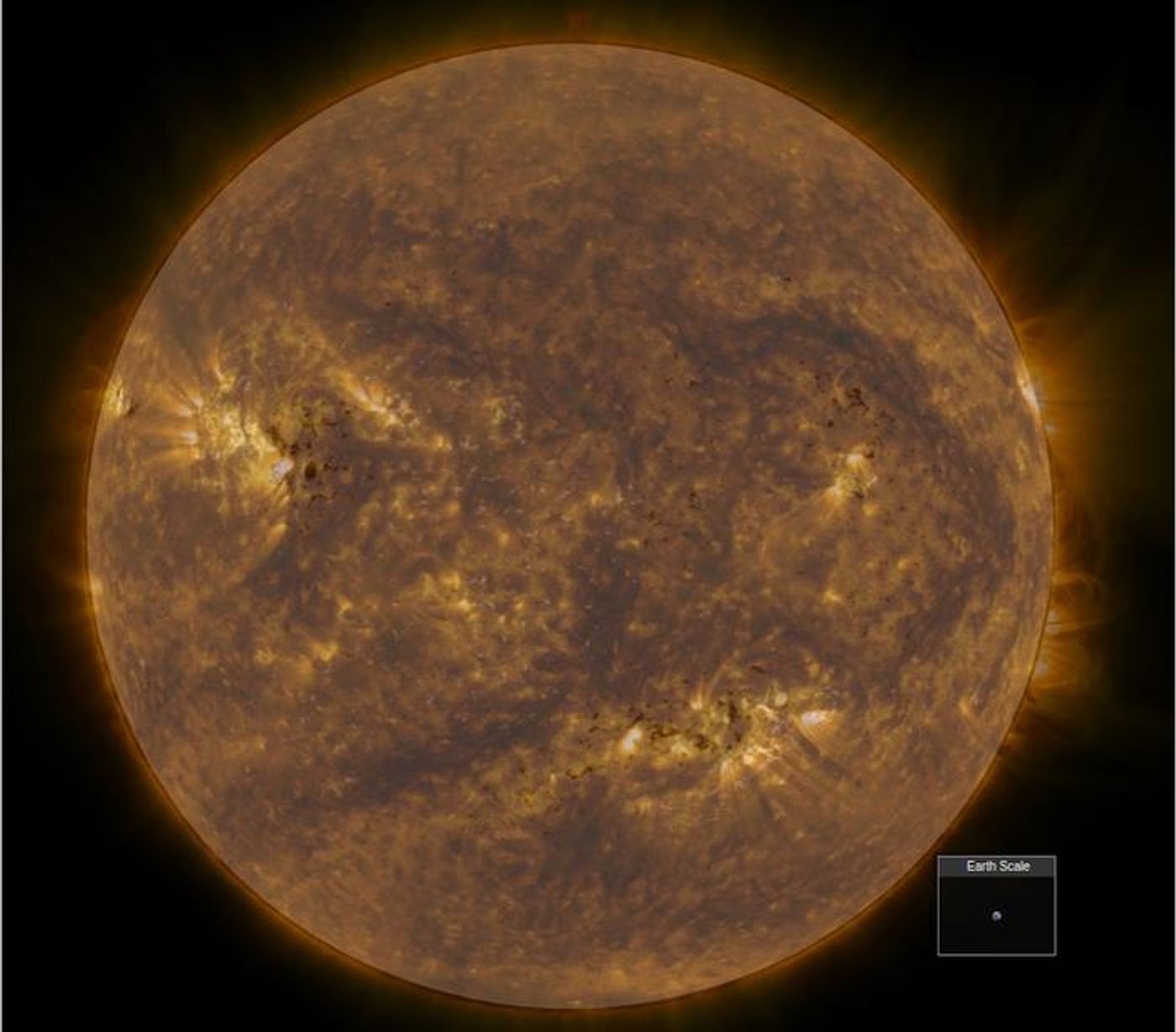Sun's Coldest Regions Could Be Heating its Upper Atmosphere
Our Sun is one of the most awe-inspiring and mysterious objects in our solar system. This massive ball of energy fusing hydrogen into helium exhibits enormous temperatures that far surpass anything on the Earth. But despite the immense knowledge scientists already know about our Sun, the one mystery that has remained elusive is knowing how its upper atmosphere that resides about 3000 miles above the visible surface of the Sun, known as the corona, exhibits temperatures hundreds of times greater than this visible surface.
Ultra-violet image displaying a solar coronal plasma discharge measured at millions of degrees with Earth for scale. (Credit: Atmospheric Imaging Assembly (AIA) on board NASA’s Solar Dynamics Observatory (SDO) spacecraft)
This is precisely what a recent study published in Nature Astronomy hopes to address what’s known as the coronal heating problem, as a team of researchers led by the Harbin Institute of Technology in China analyzed data gathered using 1.6-meter Goode Solar Telescope (GST) at Big Bear Solar Observatory (BBSO).
“The coronal heating problem is one of the biggest mysteries in solar physics research,” said Dr. Wenda Cao, who is the BBSO director and physics professor at the New Jersey Institute of technology, and a co-author on the study. “It has existed for nearly a century. With this study we have fresh answers to this problem, which may be key to untangling many confusing questions in energy transportation and dissipation in the solar atmosphere, as well as the nature of space weather.”
For the study, the researchers used GST to observe activity within the sunspot umbra, specifically the plasma fibrils that reside within the umbra, whose magnetic field activity is 6,000 times greater than Earth’s own magnetic field. The study’s findings indicate that the energy exerted by these fibrils are replenishing the energy within the Sun’s corona up to several thousand times over.
While the researchers note these findings alter our understanding of the sunspot umbra and how energy is transported to heat the solar corona, questions still loom regarding the coronal heating problem.
“While these findings are a step forward toward solving the mystery, the energy flux coming out of sunspots may be only responsible for heating those loops that are rooted in sunspots,” said Dr. Cao. “Meanwhile, there are other sunspot-free regions associated with hot coronal loops that still await to be explained. We expect that GST/BBSO will continue providing the highest-resolution observational evidence to further unlock mysteries of our star.”
What new discoveries will scientists make about the Sun, and specifically the coronal heating problem, in the coming years and decades? Only time will tell, and this is why we science!
Sources: NASA, NASA (1), Nature Astronomy, NASA (2), New Jersey Institute of Technology, Wikipedia, Wikipedia (1)
As always, keep doing science & keep looking up!









